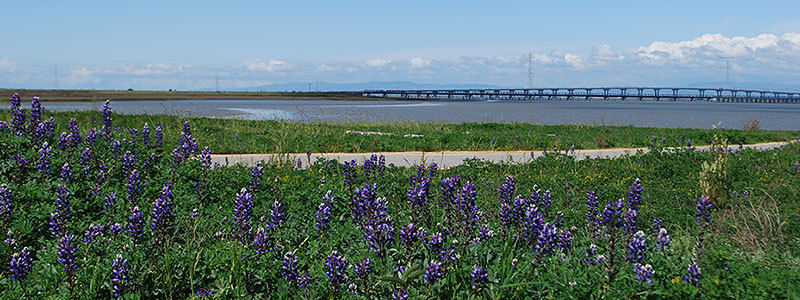Located in a tidal marsh along the San Francisco Bay, Ravenswood Preserve is a great location for birdwatching and easy-access walks.
- Salt Marsh Habitat - These wetlands provide an important buffer for high-tide events and rising sea levels. The marsh vegetation acts as a sponge, absorbing and filtering water from both the bay and upland creeks. A gradually sloped landscape gives water levels space and time to dissipate and allows wildlife to move freely with changing tides. The area provides important habitat for a wide variety of animals like crabs, shrimp, fish, birds and mammals, including two endangered species: Ridgeway’s rail and the salt-marsh harvest mouse.
- A Changing Landscape - The tide moves in and out of the marsh several times a day, changing the look of the surrounding landscape. During high tide, the wetlands are a maze of connected waterways winding through cordgrass and pickleweed, unique marshland plants that thrive in the brackish mixture of fresh and saltwater. During low tide, the water recedes, revealing muddy soil that provides a great place for birds to feed.
- Pacific Flyway - The area is a critical stop for migrating birds. Sandpipers, dowitchers and avocets use wetlands to rest and feed during their cross-continental journeys. Great blue herons, white pelicans and egrets are also commonly seen in the area.
- San Francisco Bay Trail - The trails within the preserve are part of the Bay Trail, a planned 500-mile walking and cycling path around the entire San Francisco Bay. The raised boardwalk and bridge across the wetlands recently linked a long-standing gap to create 80 miles of continuous trail, from Sunnyvale to Menlo Park and across the Dumbarton Bridge to the East Bay.
